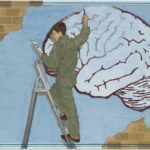Hoarding and What Home Healthcare Providers Should Know About Hoarding Disorder
Although hoarding is not a new mental health condition, a lack of focused research into hoarding disorder as a specified syndrome means that there are some challenges presented to home healthcare providers working with individuals experiencing the disorder. At Hoarding Help Central, we believe that a greater awareness of what hoarding disorder is, how it affects individuals with the disorder, and the treatment methods available can be useful to home healthcare providers.
Although there is currently a lack of research into compulsive hoarding disorder, the disorder is not at all uncommon. With some of the most recent studies on prevalence showing that an estimated 2 to 6 percent of the adult population struggles with hoarding behavior, there is a serious need for home healthcare providers to know how to work with those that experience this disorder. Today, we will be highlighting the established research regarding compulsive hoarding disorder so that you, as a home healthcare professional, are better equipped to assist those in your care who experience the disorder. Let’s get started!

What is Hoarding Disorder?
As a home healthcare provider, it is crucial that you have an understanding of what hoarding disorder is and how it manifests in affected individuals. Within the last decade, a combination of elevated media coverage and increased research into compulsive hoarding behaviors have generated greater public awareness of compulsive hoarding. That being said, there is still a great need for understanding how to best treat and assist those that experience this disorder.
Compulsive hoarding disorder is characterized by a serious difficulty with discarding objects of little to no perceived value. This behavior leads to severely cluttered homes that are so packed with items that those living in the home are negatively impacted and unable to function normally. The safety concerns, health concerns, and distress caused by these factors are substantial and those struggling with hoarding behaviors need assistance in overcoming their compulsion to collect.
Most people who hoard go on sprees of collecting items, typically engaging in excessive shopping or collecting trash with no practical place to store or use them. The imbalance created by the difficulty with the discarding of items results in extensive clutter in the homes of those affected by compulsive hoarding disorder. This clutter is typically comprised of common household items and these items commonly end up spread throughout the home in disorganized, large piles. Spaces in the home of those who hoard are frequently inaccessible or not easily navigated, leading to a lack of appropriate functioning in the home. In fact, it is estimated that about half of the homes of individuals who hoard have a sink, tub, refrigerator, or stovetop that is unusable. Further, 1 in 10 of these homes do not have a functioning toilet.
There are greatly significant social and functional implications associated with hoarding behaviors. Specifically, hoarders are significantly distressed by their own hoarding behaviors, feeling great shame and difficulty in functioning at a normal level in their everyday lives. This typically results in isolation from friends, family, and loved ones. Despite the great distress experienced from their hoarding behaviors, hoarding individuals feel incapable of controlling their compulsion to collect.

What You Should Know About the Onset of Hoarding Symptoms
So what are some of the things you should know about the onset of hoarding symptoms as a home healthcare provider? Firstly, it is important to note that the onset of hoarding symptoms most typically occurs in early adolescence with the severity of the symptoms increasing with age. Hoarding disorder follows a chronic and progressive course. This results in an excessive amount of clutter and severe impairment by mid to late life.
In regards to the causation of hoarding disorder, there is much evidence to suggest that many hoarders begin exhibiting patterns of behavior due to the occurrence of stressful and traumatic life events. These life events may occur in childhood but typically extend across the lifespan. According to some reports, children that exhibit compulsive hoarding behavior are more likely to report instances of childhood break-ins, a parent with a psychiatric illness, or excessive physical discipline. Many people that experience hoarding compulsions report that their own behavior is a result of troubles in childhood, including the experience of learned emotional suppression in the face of authoritarianism as well as abusive experiences.
In exploring the way that emotional suppression may result in hoarding behaviors, recognizing this theme may result in a better understanding of the way clutter represents an emotional purpose. This may prove effective in formulating specialized, personalized treatment methods in order to assist those that experience the compulsions associated with hoarding disorder. After all, in identifying a hoarders emotional connection with their clutter, medical health professionals may be better equipped to assist them in recognizing their emotions as emotions and items as physical objects.
The Experience of Home Healthcare Providers
In order to better assist patients experiencing compulsive hoarding disorder, home healthcare providers must be prepared to face the conditions in patient homes. After all, even more experienced health professionals can experience strong reactions upon entering such an environment. Frequently, home healthcare providers report feelings of intense anxiety when faced with such conditions and this is due, in large, by the safety and health concerns associated with severe hoarding behavior.
Along with the feelings of anxiety that home healthcare providers report when dealing with hoarding individuals, there are also feelings of frustration. After all, the significance of an individual’s compulsion to hoard can make for slow progress in rectifying the issue. Of additional concern is the high treatment drop out rate and limited client engagement associated with hoarding intervention. Hoarders tend to resist attempts of intervention as an individual’s hoarding behavior are held as in keeping with that individual’s worldview.
Hoarding individuals find perceived value in the objects that they collect and will commonly resist any attempt to discard of them for reasons that others would find ridiculous. Still, this perceived importance is significant to a hoarder. This accounts for the pleasurable feelings that hoarders associate with acquiring belongings. All too often, hoarders have a low level of insight into the severity of their own behaviors even when their living conditions cause significant distress on a daily basis. As a home healthcare provider, it is crucial that you assess an individual’s insight and readiness for change in order to implement intervention strategies effectively.

Assisting Patients in Greater Organizational Skills
In assisting patients with overcoming their hoarding compulsions during an intervention, it is important to focus on organizational skills. Challenges with organization for individuals who hoard result not only from emotional attachment but also from informational processing deficits.
Data observed in the case of both standardized testing and self-reported measures suggest that a large number of individuals who hoard have problems with both attention and decision-making. In fact, a significant number of those who hoard exhibit symptoms consistent with attention-deficit hyperactivity disorder. This results in issues with categorizing and organizing in an effective manner.
For all of these reasons, efforts should be made to help patients develop their own organizational skills during an intervention. Training in proper organization, categorization, and decision-making skills is imperative for effective treatment of hoarding individuals.
Assisting With Home Safety Risks
As highlighted, the clutter accumulated through hoarding behaviors poses a significant risk of safety to the patient, patient’s family, and healthcare providers attempting to intervene. In order to best assist patients in reducing the threat to safety, it is highly recommended that healthcare providers follow a four-step approach:
Step 1- Protect Yourself: Be sure to take only essential items with you. When organizing the home, place personal belongings into a plastic bag, seal it, and leave it near the door in order to be picked upon exit. It is also highly recommended to wear loose-fitting clothing as well as protective equipment in environments that absolutely call for it.
Step 2- Take a Safety Assessment: In order to promote safety and organize your approach to the environment, identify specific risks found in the environment. This may include fire hazards, falls, unsanitary conditions, or infestations. This may also include elderly dependents, pets, or children who are negatively affected by the extent of the clutter. Next, educate your patient about these risks before documenting your concerns and discussion with the patient.
Step 3- Prioritize Your Service Goals: Next, use your safety assessment to prioritize your goals, placing more critical items of concern first. It is effective to incorporate certain safe-management principles in your approach.
Step 4- Organize a Team of Helpers: Where appropriate, coordinate your services with local health authorities. This may include the help of the fire department, mental health workers, or public service department. It is also crucial to draw upon natural support networks during times of intervention. This may include adult children, friends, or extended family.
At Hoarding Help Central, we recognize the power of effective healthcare provider intervention. With these helpful tips in mind, you will be better suited to take on the challenges presented by instances of hoarding behavior. Best of luck!









